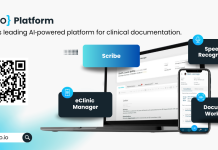Dr Grainne Watson, Chief Digital Officer of Searchlight Consulting, highlights the importance of preparation and alignment when planning a successful technology-enabled change programme
Across the UK Public Sector, organisations are struggling with a variety of challenges ranging from legacy technical debt to skills and funding shortages. Like Enterprise Solutions before it, digital services are being offered as the panacea to address these challenges.
While both Enterprise Solutions and digital services are undoubtedly necessary, they alone are not a quick fix for the myriad of underlying challenges. Rather a change programme where both people and technology are central ensures challenges are surfaced, addressed and solutions future-proofed for ongoing success. Searchlight have been implementing enterprise solutions for over 20 years and a focus on technology first rarely delivers desired benefits.

As an example, wrapping digital services around legacy applications and technologies, bolting on new citizen facing interfaces or trying to overlay paperless, automated processes will solve certain challenges, but without understanding the route of the issue will usually not provide the flexibility needed to truly enable new ways of working. Similarly, focusing on an end-user today and proposing a change management programme will not take technology and its limits into account.
Throughout the Public Sector, organisations are planning to or already actively investing heavily in technology-enabled change programmes.
Programmes that they hope will deliver enhanced services and can be delivered within ever demanding budget constraints. Below we provide three tried and tested ways of ensuring success.
Set realistic goals
Both surveys and received wisdom suggests that less than 30% of technology-enabled change and digital transformation programmes succeed in completely delivering their objectives, with most failing to meet their expected timelines and budgets. At Searchlight, we frequently see that complexity is rarely assessed until the programme has already started to veer off course. These projects and programmes are complex because they are multi-faceted, comprising technology, information, processes, and people, but they rarely manage them all successfully.
Technology for instance is frequently purchased before all requirements are properly assessed meaning stakeholders unfamiliar with technology tend to expect the technology to deliver what they needed. Thus, expectations of delivery soar. When these expectations are not met, the project is not deemed a success. Conversely when a project is planned with all stakeholders involved, expectations are set at achievable levels and the requirements are in place before any technology is purchased removing one of the most common routes to failure. Once you have set your goals realistically, you then need to assess your organisations readiness to change.
Assess current ways of working and plan for change
As organisations evolve, they outgrow their ways of working and operating platforms meaning their processes, organisational structure and the technology which supports them must be reviewed. You cannot go digital in six weeks if the vast majority of your organisation is still paper based.
Similarly, autonomous systems will not work well if your organisation is hierarchical and requires high level decision makers to approve minor changes. Instead, your organisation will grind to a halt. To avoid this, it is best to assess how you work before you plan your change programme. As an example, one of our public sector clients in the health sector was about to undertake a large-scale technology enabled change programme. Once they had set their realistic goals, they asked us to assess their ways of working, advise on a delivery methodology and support the set-up of the chosen methodology to ensure it could be delivered effectively to time and in the budget.
While the team had developed an effective delivery framework, we found that while people understood it, it required further embedding and while it was a useful framework, it would not work in its entirety for all programmes.
The framework needed to be tailored and prescriptive right down to individual team members to ensure deliverables were understood, laid out clearly in the delivery lifecycle and achievable. From the outset therefore, all stakeholders were aware of the intent of the overall programme, this specific project and what was required of them to deliver it. While this may sound simple, it is not often done well leading to siloed delivery streams and the beginnings of another frequent route to failure.
Manage your projects & programmes throughout
Having worked across a diverse range of industries (commercial and public sector) to help our clients build business capabilities and leverage technology to drive business improvement and deliver tangible business outcomes, we have identified our final way to avoid failure: continued alignment.
Having a guiding coalition that spans the organisation, is trusting and meets to discuss issues as well as successes will deliver on their obligations to ensure success. Frequently, project meetings gloss over the challenges while delivering good news. This removes focus from the continued effort required to address issues and deliver for all stakeholders and against all metrics. Similarly, prioritising improvement recommendations and monitoring the implementation of all agreed interventions will ensure projects are delivered successfully.
Delivering technology programmes can be difficult, but if pitfalls are avoided through planning and actions executed effectively, organisations will deliver transformative outcomes. As with all technology enabled change initiatives, there are roles that will require specialist skills and specific experience and Searchlight is in a privileged position to support the UK’s Public Sector in this quest. We have been named on three Crown Commercial Service (CCS) frameworks focused on helping central, local government and other public sector buyers with their digital, cloud and back-office transformation programmes – RM6193 Software Design & Implementation Services (SDIS), G-Cloud 12 for Cloud Support Services and DOS 5.
Please note: This is a commercial profile











